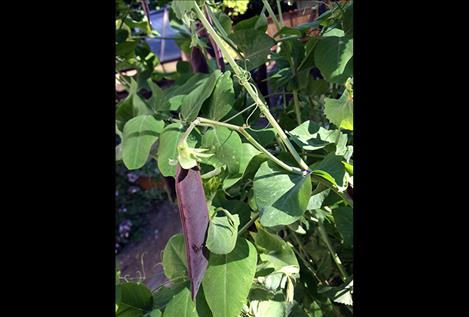Tips for growing organic garden peas
Hey savvy news reader! Thanks for choosing local.
You are now reading
1 of 3 free articles.
Peas love good, rich, moist loamy soils. Gypsum may be added to heavy clay soils to lighten them, and organic compost is excellent for building mountain and valley soils poor in nutrients. Fish bone meal, alfalfa meal, and kelp meal are amendments that will provide the complete range of nitrogen, phosphorous and potash to your garden plot necessary for successful vegetable production. Remember that organic soils are alive with microbes, so food tastes better, is more nutritious, and is safe to eat. Also, organic soils capture carbon out of the air, reducing heating of our planet’s atmosphere.
Peas have been grown as a garden crop for centuries and seem to have been a popular vegetable through all that time. Several heirloom varieties of peas still exist:
Blauwschokker (Blue-Podded) pea is an ancient variety so old it was described in Gerard’s Herball written in 1596. Plants are very healthy and productive. The pods can be eaten as snow peas when picked early, used as shelling peas later, and dry well for use as soup peas. The vines of the blue-podded pea grow 60 to 72 inches tall and require a trellis.
Alaska is an heirloom pea from 1880. It is early, ripens all at once, and like many heirloom varieties will dry and keep well. It is excellent for soup. The vines grow about 30 inches tall.
Tom Thumb heirloom pea from 1854 is a miniature pea variety that does not need to be trellised. The vines grow to eight or nine inches tall and are suitable for containers and for growing in cold frames early and late in the season.
Lincoln is a famous variety from 1908 that is adapted to warmer American summers. The vines grow to about 28 inches tall and the pods produce eight or nine peas each.
Wando is very adaptable to differing climates. It is more heat resistant than most peas and can be planted later. Wando dates to 1943 and the vines grow about 30 inches tall.
Because peas can take some frost, even while quite young, they can be planted early. Some people living in milder climates than Montana’s plant their peas on St. Patrick’s Day; 17 of March.
Here in Western Montana, we make our first sowing April 15 to 20 depending on the weather and the soil temperature. A second sowing usually is made July 1 (after first crop is harvested.) It is efficient use of space and easy picking if trellises are set up in the garden bed. The first crop bears from around June 15 -July 1, and the second crop bears from about Sept. 15 – Oct. 25.
Plant your peas in full sun for best production. The ideal growing temperature is 55 - 70 F, with 60-65 F being ideal (peas prefer cool weather). The optimum soil pH for peas is 5.5-7.5. Peas will germinate between 40-85 degrees F, but 60-75 F is ideal. Germination may take 6-17 days. Direct-sow pea seed one inch deep and one inch apart. Plant a few extra at the end of the rows to fill in later as mini transplants.
Water well; keep the bed moist, not wet. For the second (midsummer) planting, plant seeds 2-3 inches deep, one inch apart, otherwise the same as spring. Do not let plants dry out at any time, especially during flowering. Water peas early in the day only, allowing leaves to dry early in the day - steady moisture is best.
Some pests of peas are: gophers, aphids, birds, mice, cutworms, mites, leafhoppers, cucumber beetles, pea weevils, and various caterpillars. Powdery mildew can be troublesome also, especially if soil becomes dry and air circulation and sunshine is limited.
To harvest: pick peas when the first pods reach full size: 4 – 5 inches, not smaller. Pick snow peas before seeds start to swell. Snap peas need to be picked when pods are full size, fat, and round with peas inside. Check and pick every 3 days to keep plants producing. The first peas ripen at the base of the plant—remove them carefully to not damage plants. The harvest period should be four to six weeks long, for each planting. Pick all (ready) pods to keep vines producing. After harvesting keep cool, in high humidity and out of the sun. Store them in a cool location or in the refrigerator. Picked pods last only five to six days. Peas do freeze well and most varieties dry and store well.
















